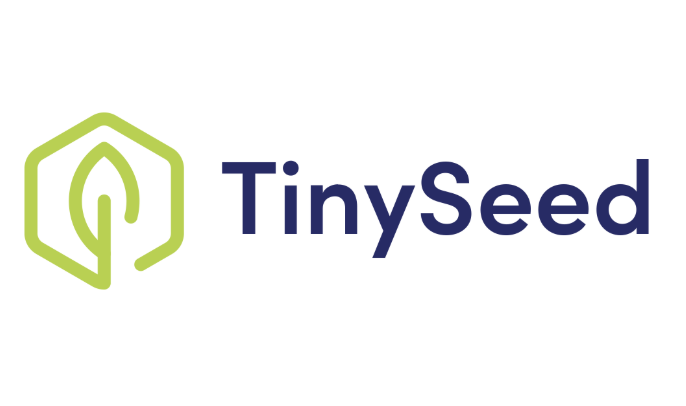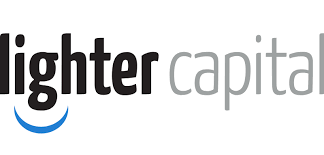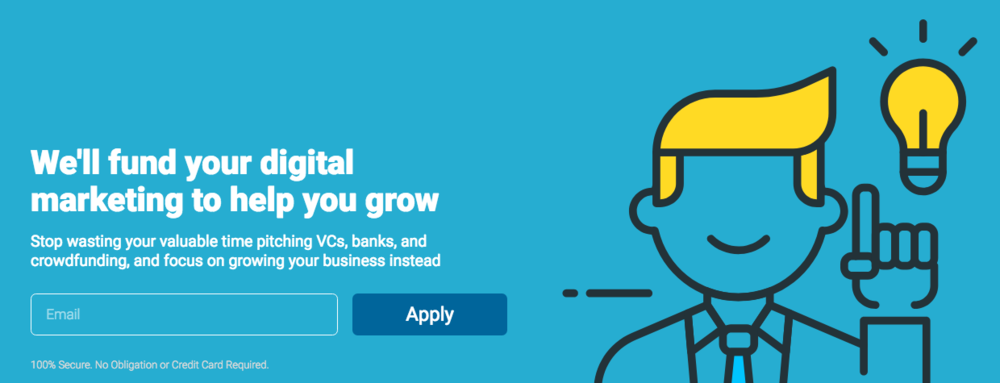Latest news about Bitcoin and all cryptocurrencies. Your daily crypto news habit.

When we first started building Outseta we stated outright that we weren’t interested in raising venture capital — instead, we planned on bootstrapping the business and remaining independent. It wasn’t that we had any issue with venture capital per se, it was simply a reflection of never wanting to have our hand forced in pursuit of growth if we thought it wasn’t what was right for the business. There’s a lot of advantages to organic growth that aren’t discussed enough.
Over the past 12 months there’s been an explosion of new financing options and models made available to companies that feel like us. And many of them are attractive to the extent that they’ve flipped our own internal dialogue.
This post is for other early stage SaaS companies who are similarly considering whether some of these new forms of capital make sense for their business. I’ve read the fine print to highlight the unique attributes of each fund and who they are best suited to — and I’ll share our own thinking in terms of each model’s appeal to our own business.
Indie.vc (V3)
- Website: http://www.indie.vc/
- Key Personnel: Bryce Roberts
- Revenue Requirement: Post revenue, but no minimum requirement.
- Equity Stake: Yes, but diminishing to 10% of Indie.vc’s initial equity stake.
- Board Seat: No
- Investment Docs: https://github.com/indievc/terms
- Application Deadline: March 1, 2019
- Apply Here: http://www.indie.vc/apply
Indie VC is the OG on this block and describes itself as “growth revenue for post-revenue companies.” This is the company’s third fund, which is designed to support founders on their path to profitability.
Investment Model
The program is an accelerator that lasts for 12 months, with investments ranging anywhere from $100,000 to $1 million — the historical average for the fund has been around $285,000. Included in the investment docs is a predetermined percentage of ownership allocated to the fund should you choose to sell your company. Your company will begin repaying the fund 12 to 36 months after the investment is made.
Typically founders will pay 3%-7% of monthly revenue until they have repaid the fund 3x the amount invested. Each time a payment is made, the fund’s ownership stake is reduced with the founders’ ownership shares increasing. Founders can repurchase up to 90% of the fund’s ownership stake via these payments or lump sum payments, with the fund maintaining 10% of the equity that it was initially allocated.
How They Help
Indie.vc helps founders primarily by exposing them to one another and organizing quarterly events and retreats for portfolio companies. The fund also has monthly meetings with each portfolio company.
Commentary
The Indie.vc model is really appealing to me — they’ve done this a few times already and I suspect they’ve worked out many of the kinks. I’m also attracted to the simplicity of their model — the predetermined equity stake in the business, the 3x payout that you need to return to the fund, and the fact that you can earn back 90% of the equity the fund initially takes.
I even like that the fund hangs on to a residual equity stake, so that they will continue to be in your corner for the long haul. The 10% of the equity they were initially issued that they do hang on to could potentially be seen as steep, particularly if they are funding companies that already have $20,000+ in MRR so that’s something to consider. But it’s always good to look at the companies and people that you take from money as long term business partners.
Tinyseed
- Website: https://tinyseed.com/
- Key Personnel: Rob Walling, Einar Vollset
- Revenue Requirement: No minimum requirement
- Equity Stake: Yes — 8%-15%
- Board Seat: No
- Investment Docs: https://tinyseed.com/faq/
- Application Deadline: February 15, 2019
- Apply Here: https://tinyseed.com/apply/
Like Indie.vc, Tinyseed is not just a funding model but a 12 month accelerator program. The fund focuses exclusively on subscription software companies and is willing to invest in pre-revenue companies.
Investment Model
Tinyseed invests $120,000 for your company’s first founder, then up to $20,000 per additional founder. The fund does take a permanent equity stake in your business of 8%-15%, although they do not take a board seat or hold any voting rights.
Of the money invested, a lump sum is delivered upfront to help out with start-up costs, with the remainder being paid out to the founders as salary on a monthly basis for the duration of the program. Founders agree to a salary cap (based off of the average salary of a software engineer in the nearest major city), and can increase their salary up to that cap as the business makes money. Any revenue beyond that salary cap is paid out as dividends, which are paid out to founders and the fund based on their percentage of ownership in the company.
The founders maintain complete optionality in terms of when to take dividends — if they prefer to invest revenue back into the business they have the option to do so. The idea here is that the fund gets paid when the founders choose to get paid. If the company sells, Tinyseed receives the initial investment back (minus any dividends paid to date), and then the proceeds are divided based on percentage ownership in the business.
How They Help
Tinyseed invests in cohorts of 10–15 companies at once so that portfolio companies benefit from exposure to one another — this includes weekly calls with other portfolio companies. They also have a network of mentors that’s about as strong as could be if you’re looking to build an early stage SaaS company. Mentors are available during scheduled office hours calls.
Commentary
Tinyseed is particularly attractive to me because of the money, the advisors, and the ecosystem it would plug us into — the companies Tinyseed is funding represent our exact target market at Outseta. While it would be nice to have some additional cash to invest into the business and begin taking some salary, the $160,000 total doesn’t go very far when split between 3 founders. It would probably allow us to each take a salary of around $3,000 per month — not nearly enough to live on — making the fund’s money a more attractive option for single founders.
The advisors are a huge reason, in my eyes, to apply to this fund but they are also probably the biggest variable. How much interaction does a portfolio company actually get with each of the advisors? It’s not like Rand Fishkin has the time to work with 10–15 companies on SEO or Hiten Shah has the time do so the same with each on product strategy. I know the advisors are more than names slapped up on a marketing website, but the extent of their involvement is certainly an open question. The ecosystem, for us, is a no-brainer.
It’s worth noting that Tinyseed takes and keeps the largest equity stake of any of the options on this list, but the stake seems reasonable given that they are typically making earlier stage (riskier) investments. If I was an investor, this model would be hugely attractive to me — spending $120,000 to buy a 8%-15% stake in a company could prove to be hugely lucrative if a company does reasonably well. I’m sure this fund will see a huge volume of applications from some awesome companies.
As an operator, I love the model of the fund gets paid when the founders get paid — I think Tinyseed nailed this aspect of their investment model. While I’m not crazy about giving up 8%-15% equity in the business, paying dividends based on percentage of ownership in the company makes logical sense to me. I’m comfortable with the equity stake because it means that the mentors and other folks involved in this fund are going to be on your side for the long term, which is a pretty amazing benefit.
Side note — we’re applying to Tinyseed. Here are our application answers.
Earnest Capital
- Website: https://earnestcapital.com/
- Key Personnel: Tyler Tringas, SureSwift Capital
- Revenue Requirement: No minimum requirement
- Equity Stake: Yes, but diminishing. In their default terms Earnest holds a small residual stake.
- Board Seat: No — upon request Earnest can become a board observer without voting rights
- Investment Docs: Shared earnings agreement V1
- Application Deadline: Open applications beginning in January 2019
- Apply Here: https://earnestcapital.com/apply/
Earnest Capital makes seed stage investments in “bootstrappers, indiehackers, makers, and real businesses.” Their investment model was developed to align with founders who want to build sustainable, profitable businesses.
Investment Model
Earnest invests upfront capital in businesses typically after a product has launched, but before the founders begin working on the company full time. The investment model has two main components:
- Businesses pay back a “Return Cap” which is 3x-5x the amount invested in their company.
- In their default terms, Earnest will maintain a small residual equity stake in the business even after their Return Cap is paid back — this amount scales down as the fund is repaid, but never reaches 0. This means that Earnest and their advisors are still incentivized to keep helping you grow the business after the Return Cap is fully paid because they would participate in a sale if it ever happened. “We will likely still offer and do deals that have no residual stake after the Return Cap is repaid, but that will likely entail a higher total Return Cap to compensate for the lack of residual stake,” says Principal Tyler Tringas.
Earnest calculates “Founder Earnings” which is net income + any amount of founders’ salaries over a predetermined threshold. Similarly to Tinyseed, this model is designed to give founders the option to continue investing profits in their business if they see fit and the fund is only paid when the founders are paid.
How They Help
Earnest also has a strong network of mentors, all of whom have skin in the game having invested in Earnest companies. There is no curriculum or prescriptive structure to mentorship; Earnest companies are expected to tell the fund what they need and ask for help. All mentorship is handled remotely.
Commentary
I’ve really enjoyed following Earnest Capital’s story and the research that went into them coming up with their investment model. I also like that all of their advisors have skin in the game — it definitely makes me feel like they’ll be accessible and helpful. Like Tinyseed, I love the alignment of the fund gets paid when the founders get paid, but Earnest is much more appealing to me if returning 3x the amount invested to the fund rather than 5x.
As with Tinyseed, I understand the reasons for this as they are making early stage bets, so it’s sort of pick your poison — a bigger return multiple or a larger equity stake. But I’d be hesitant to take too much money; the idea of taking on $200,000 and needing to repay $1,000,000 is a little daunting.
We are considering applying to Earnest as well — we prioritized the Tinyseed application given the pending deadline. Earnest also asks founders for some additional materials including a video overview of the product that we’ve yet to film. Stay tuned.
Lighter Capital
- Website: https://www.lightercapital.com/
- Key Personnel: BJ Lackland
- Revenue Requirement: $15,000 monthly recurring revenue and gross margins of 50%+
- Equity Stake: No
- Board Seat: No
- Apply Here: https://www.lightercapital.com/apply/
Lighter Capital provides “revenue based financing” to SaaS, tech services, or digital media companies based in the United States. They have provided funding to over 300 start-ups to date.
Investment Model
Lighter Capital makes investments of $50,000 to $3 million — up to ⅓ of a company’s annualized revenue run rate. The money borrowed is typically repaid over 3–5 years, with payments ranging between 2%-8% of your monthly revenue. Typically the money returned is between 1.35x-2x the amount borrowed.
Companies do not need to be profitable to secure financing, but there should be a clear path to profitability in the company’s future. Funding is typically received within 4 weeks of application, and follow-on rounds can be distributed in 3–4 business days. Lighter Capital only funds companies based in the United States.
How They Help
Lighter is not an accelerator and does not offer a network of mentors — instead it’s more of a true financing option. “Aside from the reporting, where we are most helpful is planning out a company’s financing, frankly” says CEO BJ Lackland. “As opposed to a VC we don’t necessarily need to know the best VP of Sales candidate in healthcare tech in South Carolina. What we know is if you’re doing X million in revenue and have this kind of burn rate and this kind of growth rate, what kind of capital is available to you from which different sources? Whether it’s angels, VCs, or banks, we probably know how to introduce you to any of those sources. So we can help with strategy, mostly on the capital side.”
Commentary
Lighter Capital is without question the most attractive of these models is you’re simply looking for financing given the speed at which they make funding decisions and that you’re only on the hook for returning 1.35x-2x the amount borrowed. That said, there’s a reason for that — they’re taking on far less risk by only funding companies with $15,000+ in MRR and otherwise healthy financial metrics.
Outseta isn’t there yet, so at the moment this option is out of reach for us.
Metcalfe Fund
- Website: https://metcalfe.fund/
- Key Personnel: Mitch Kessler
- Revenue Requirement: $10,000 monthly revenue
- Equity Stake: No
- Board Seat: No
- Application Deadline: Open applications
- Apply Here: https://metcalfe.fund/#signup
Metcalfe Fund is a new financing option that “provides growth capital to online businesses using actual business data instead of a credit score.” The company invests in SaaS, e-commerce, and other types of online businesses.
Investment Model
After providing funding to your company, Metcalfe is paid back over time using an agreed upon percentage of your future sales. Repayment occurs daily with a small fixed percentage of daily sales being automatically debited from your bank account — they refer to this investment model as a Structuralized Future Revenue Purchase, or SFRP. The company provides financing in the range of $10,000-$500,000, which is typically paid back within 6 months for a 6%-10% fee (12%-20% annualized). Loan decisions can be made in a matter of days.
I asked Founder Mitch Kessler what factors are considered when making loan decisions. “In general we are assessing a company’s marketing sophistication and their financial health,” says Kessler. “We can cross-pollinate marketing and financial metrics, such as conversation rates, CAC, LTV, AOV, and Revenue forecasts to get a better idea of their potential future revenues aided by marketing, and if they are able to do this themselves or if they will need help from marketers in our network.”
Businesses must be based in the United States and have been in business for at least six months to qualify.
How They Help
Metcalfe’s funding model is focused specifically on delivering funding to be spent on digital marketing and growth. Metcalfe is essentially a marketplace of vetted marketing agencies and talent, which it will in turn introduce to the companies that it’s providing funding to. By playing matchmaker, Metcalfe seeks to provide agencies with clients who have money to spend while providing companies with pre-vetted marketing partners who will deploy the provided capital as efficiently as possible.
Commentary
Of the alternatives on this list many are new and Metcalfe is the newest. Like Lighter Capital, this option will be out of reach for earlier stage companies that don’t yet have the $10,000 monthly revenue that’s required. For businesses needing a short term injection of cash to spend on marketing, this is a strong option with reasonable payback terms. It’s also a model that’s well aligned with more technical teams that don’t have in-house marketing expertise. Taking financing from a company that’s also pairing you with an agency partner they believe in is reassuring.
A new generation of financing options is here
All of the alternatives on this list are new and interesting options that allow founders to raise capital while maintaining control of their businesses — and more alternatives seem to be hitting the market every day. Rather than being shackled by cookie-cutter financing models, a new generation of entrepreneurs is learning that if you can dream up a new financing structure you can probably make it happen. But more importantly, there seems to be a new emphasis on building real, profitable businesses. I for one believe that’s a good thing that will ultimately result in stronger, more durable businesses.
Originally published at www.outseta.com.
Five Alternative Funding Options For SaaS Startups was originally published in Hacker Noon on Medium, where people are continuing the conversation by highlighting and responding to this story.
Disclaimer
The views and opinions expressed in this article are solely those of the authors and do not reflect the views of Bitcoin Insider. Every investment and trading move involves risk - this is especially true for cryptocurrencies given their volatility. We strongly advise our readers to conduct their own research when making a decision.





